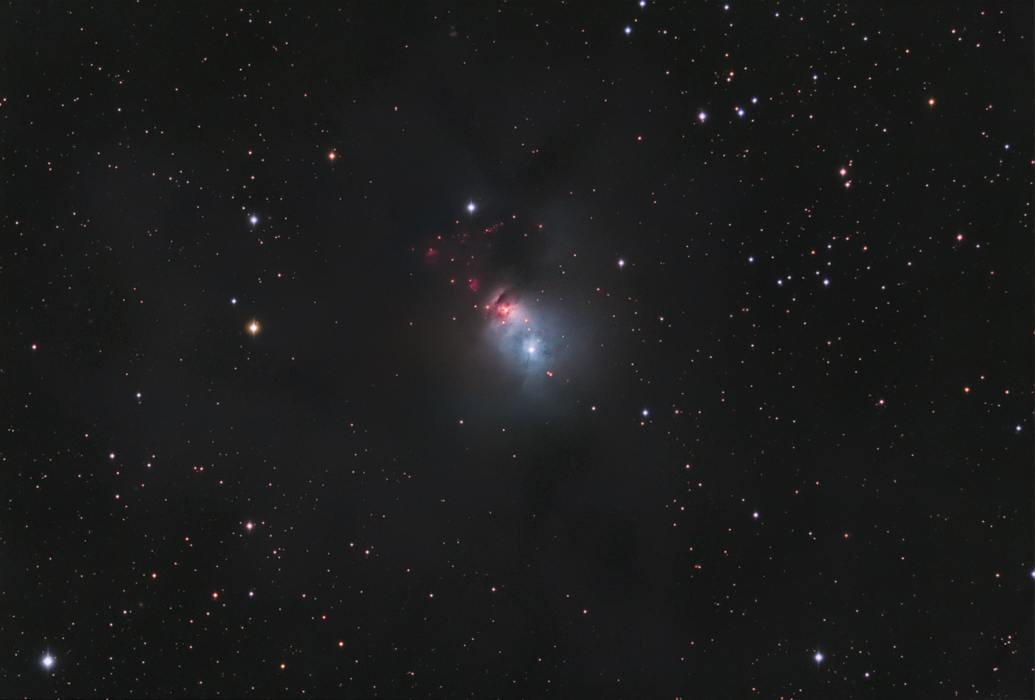NGC 1333
Characteristics:
Magnitude: ? (faint)
Size: about 9'
Distance: 1000 light years
RA: 03h 29m 29s
Dec: 31 degrees 23' 07"
Description:
NGC 1333 is located
in the constellation Perseus and is a beautiful example of a reflection
nebula. Stars forming within this nebula are less than a million
years old, which is young by stellar standards. Blue light
emitted by the central star is preferentially scattered by surrounding
dust
(resulting in the characteristic blue color of the reflection
nebula). Focal patches of hydrogen gas in this region glow in
reddish-brown light, representing Ha emission induced by
ultraviolet radiation from nascent stars forming within the
nebula. Much of this
region is filled with dense dust that
obscures visible light emitted from protostars within the
nebula. However, the Spitzer
infrared telescope is capable of revealing many of the underlying
stars and associated stellar jets that emit in the infrared (a
wavelength that penetrates the heavy dust shroud surrounding this
region). Like NGC
7023
and the Cocoon
Nebula, this region is comprised of all three main
nebulosities:
reflection, emission, and dark. More information about this
region may be found here.
Photographic Details:
Date: September 29, 2006
Scope: Takahashi
FS102 at f6, on the G11 Losmandy
Mount.
Autoguider: SBIG STV with
e-finder.
Camera: FLI Maxcam CM10
Filter: Astronomik Type II Clear, R, G, B filter set.
Exposures: LRGB. 32 x 4' Luminance; 4 x 5' R; 4 x
5' G; 6 x 8' B (all unbinned).
Conditions: Temperature 65 down to 50 degrees F during
session; above average
transparency; average seeing; a little breezy.
Processing: Debloomed
with Ron Wodaski's
Debloomer software, followed by calibration and alignment in
Maxim.
Sigma combined using RC Sigma Reject
MaximDL, followed by DDP
in ImagesPlus (IP). Further processing in Photoshop CS (16
bit format).
Please
note: Graphics on this website
may not be reproduced without author permission.
Back to Nebulae
Home
